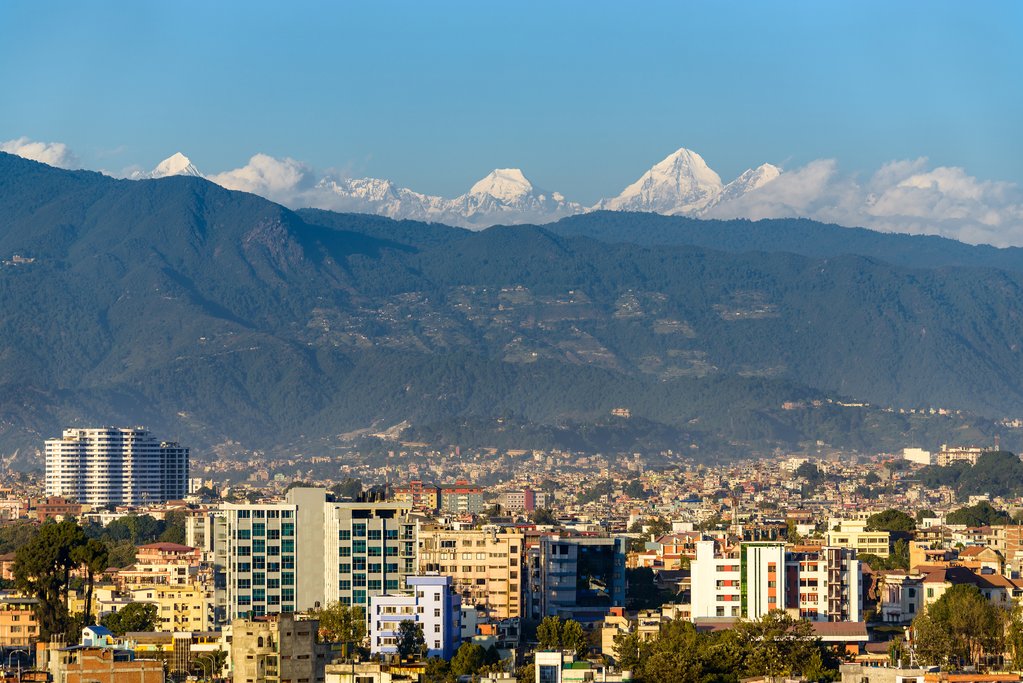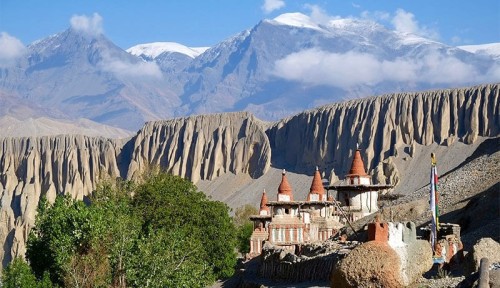Great Himalaya Trail in Nepal

Great Himalaya Trail in Nepal
Overview And Highlights
Explore the Great Himalaya Trail in Nepal for an unforgettable trekking adventure. Discover remote landscapes, cultural diversity, and stunning mountain vistas along this iconic trail. From the majestic peaks of Everest and Annapurna to the hidden valleys of Dolpo and Langtang, immerse yourself in the beauty of the Himalayas.
The Great Himalaya Trail in Nepal traverses some of the most stunning and diverse landscapes in the world, offering numerous highlights along the way. Here are a few:
Mount Everest Region:The trail passes through the Everest region, offering breathtaking views of the world's highest peak, Mount Everest (8,848 meters / 29,029 feet).Trekkers can experience the Sherpa culture in villages like Namche Bazaar and Tengboche Monastery.
What is Mount Everest Region?
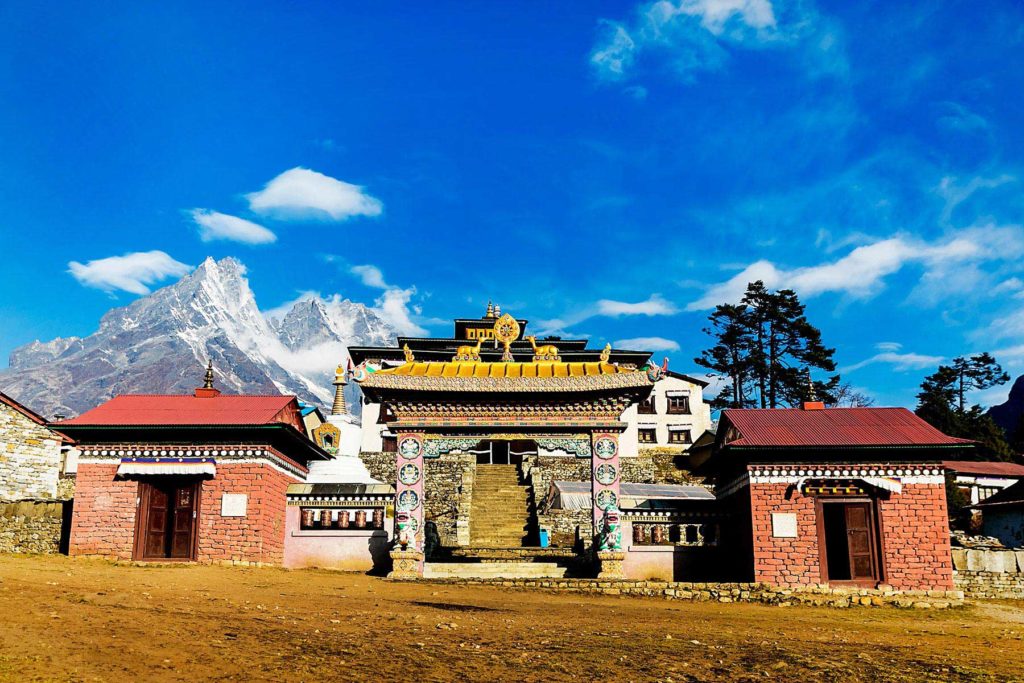
The Mount Everest region, also known as the Khumbu region, is one of the most iconic and sought-after destinations along the Great Himalaya Trail in Nepal. Here are some highlights of this region:
Mount Everest (Sagarmatha):
The region is home to Mount Everest, the tallest mountain on Earth, standing at 8,848 meters (29,029 feet) above sea level.Trekkers often start their journey from Lukla, flying in from Kathmandu, and trek through the Khumbu Valley to reach Everest Base Camp.
Everest Base Camp (EBC) Trek: is a popular destination for trekkers and climbers, offering spectacular views of Everest and the Khumbu Icefall. It's a hub of activity during the climbing season, with climbers from around the world preparing for their ascent to the summit.
Namche Bazaar is the largest town in the Khumbu region and serves as the main trading center.It's a vibrant and bustling town with shops, lodges, and bakeries, and it's a great place to acclimatize before heading higher into the mountains. Tengboche Monastery is one of the most important monasteries in the region and offers stunning views of Mount Everest and Ama Dablam.
Trekkers often stop here to witness the morning prayers and soak in the serene atmosphere. Ama Dablam:Ama Dablam is one of the most beautiful and iconic peaks in the Everest region, known for its stunning pyramid shape.It's a popular peak for climbing and trekking, and its distinctive silhouette can be seen from various points along the trail.
Sherpa Culture: The Khumbu region is primarily inhabited by Sherpas, an ethnic group renowned for their mountaineering skills and hospitality.Trekkers have the opportunity to learn about Sherpa culture, visit traditional villages, and interact with local people along the trail. Sagarmatha National Park:The entire Everest region lies within Sagarmatha National Park, a UNESCO World Heritage Site known for its rich biodiversity and stunning landscapes.
The park is home to rare Himalayan wildlife such as snow leopards, musk deer, and Himalayan thars.These highlights make the Mount Everest region a must-visit destination for trekkers and adventurers, offering not only the chance to witness the world's highest peak but also to immerse themselves in the unique culture and natural beauty of the Himalayas.
The trail takes you through the Annapurna Conservation Area, which boasts some of Nepal's most famous and picturesque trekking routes.Highlights include views of Annapurna I (8,091 meters / 26,545 feet) and the Dhaulagiri massif, as well as diverse landscapes ranging from subtropical forests to high-altitude deserts.Passing through culturally rich villages like Ghorepani and Ghandruk, where you can experience Gurung and Magar ethnic cultures.
what is Annapurna Region?
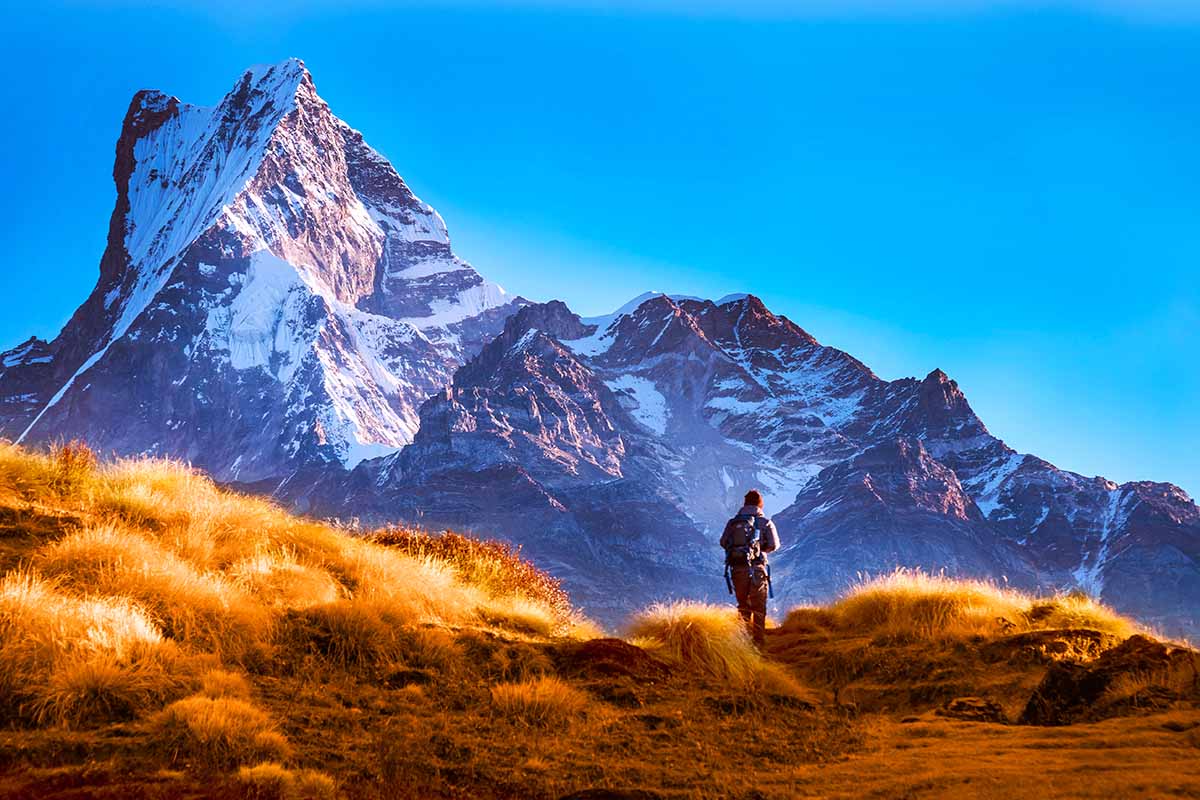
The Annapurna region is another major highlight along the Great Himalaya Trail in Nepal. It's located in the central part of the country and is renowned for its stunning landscapes, diverse cultures, and some of the world's most famous trekking routes. Here are some key features of the Annapurna region:
The Annapurna massif is a subrange of the Himalayas and includes several peaks over 7,000 meters, with Annapurna I being the highest at 8,091 meters (26,545 feet). The region offers breathtaking views of snow-capped peaks, deep valleys, and terraced hillsides.
The Annapurna Circuit Trek is one of the most popular trekking routes in Nepal and the world. It typically takes around 15-20 days to complete and circumnavigates the entire Annapurna massif.The trek offers diverse landscapes, including lush subtropical forests, alpine meadows, and arid high-altitude deserts.Annapurna Base Camp (ABC):
Annapurna Base Camp Trek is a popular trekking destination located at the foot of Annapurna I. It offers stunning panoramic views of the surrounding peaks, including Annapurna South and Machapuchare (Fishtail).The trek to ABC is shorter compared to the Annapurna Circuit but still provides a rewarding experience.
Ghorepani-Poon Hill Trek:This short trek is a popular option for those with limited time or trekking experience. It offers stunning sunrise views of the Annapurna and Dhaulagiri ranges from Poon Hill.The trek passes through picturesque villages like Ghorepani and Ghandruk, where trekkers can experience Gurung and Magar culture.
Cultural Diversity:The Annapurna region is home to diverse ethnic groups, including Gurungs, Magars, Thakalis, and Manangis, each with their own unique traditions, languages, and lifestyles.Trekkers have the opportunity to immerse themselves in local culture by visiting traditional villages, monasteries, and interacting with locals along the trail.
Natural Hot Springs:After a long day of trekking, many trails in the Annapurna region offer natural hot springs where trekkers can relax and rejuvenate tired muscles.Places like Tatopani are famous for their hot springs, providing a soothing break during the trek.The Annapurna region's combination of stunning scenery, rich culture, and varied trekking options makes it a favorite destination for adventurers and nature lovers alike.
what is Langtang Region?
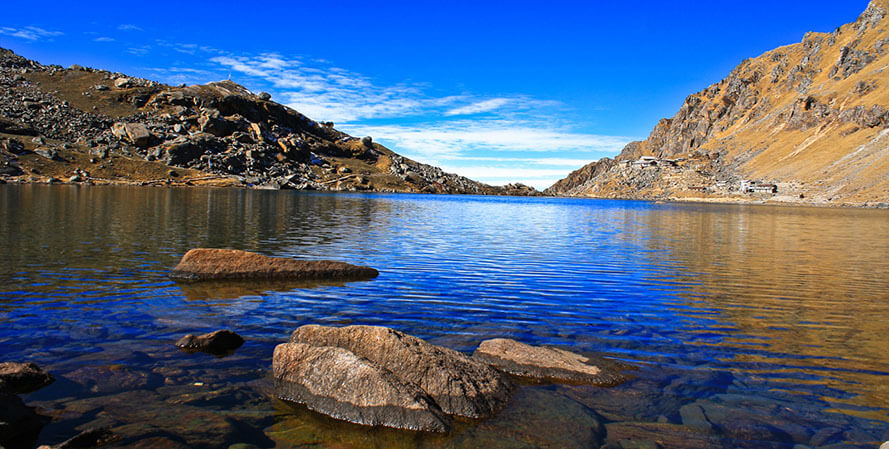
The Langtang region is a beautiful and culturally rich area located north of Kathmandu, bordering Tibet. It's one of the highlights along the Great Himalaya Trail in Nepal. Here's an overview of the Langtang region:
The Langtang Valley Trek is one of the most scenic valleys in Nepal, surrounded by snow-capped peaks and lush forests.The trek to Langtang Valley offers stunning views of peaks such as Langtang Lirung (7,234 meters / 23,734 feet) and allows trekkers to experience the unique culture of the Tamang people.Tamang Heritage Trail:
The Tamang Heritage Trail is a cultural trek that offers an insight into the traditional lifestyle and culture of the Tamang people, an ethnic group with Tibetan origins.Trekkers can visit Tamang villages, monasteries, and learn about the customs and traditions of the local people.
Gosainkunda Lake Trek is a sacred alpine lake located at an altitude of about 4,380 meters (14,370 feet).It is a pilgrimage site for Hindus and Buddhists, particularly during the Janai Purnima festival in August.
The trek to Gosainkunda Lake offers stunning views of the Himalayas and is often combined with the Langtang Valley trek.Kyajin Gompa:Kyajin Gompa is a Tibetan Buddhist monastery located in the upper Langtang Valley.It's a spiritual center and a resting place for trekkers, offering panoramic views of the surrounding peaks.
Langtang National Park:The Langtang region is protected by Langtang National Park, Nepal's first Himalayan national park.The park is home to diverse flora and fauna, including the elusive red panda, Himalayan tahr, and various species of birds.Scenic Landscapes:The Langtang region offers diverse landscapes, including dense forests of rhododendron, oak, and pine, as well as alpine meadows and high-altitude glaciers.
Trekkers can enjoy the tranquility of nature and breathtaking mountain views throughout the trek.The Langtang region's combination of natural beauty, cultural richness, and relatively quieter trails make it a fantastic destination for trekkers seeking an authentic Himalayan experience.
Langtang offers stunning mountain vistas, including Langtang Lirung (7,234 meters / 23,734 feet), and a chance to explore the unique culture of the Tamang people.The region is known for its beautiful alpine scenery, dense forests, and high mountain passes.
what is Kanchenjunga Region trekking?

The Kanchenjunga region trekking offers an extraordinary adventure in one of Nepal's most remote and least explored areas. Here's an overview of what you can expect from trekking in the Kanchenjunga region:Mount Kanchenjunga:Kanchenjunga is the third highest peak in the world, standing at 8,586 meters (28,169 feet).
It dominates the landscape of the region. The trek offers stunning views of the peak and its neighboring peaks, including Kangchenjunga West (Yalung Kang), Kangchenjunga Central, and Kangchenjunga South. Remote Wilderness:
The Kanchenjunga region is one of the most remote and unspoiled areas in Nepal. Trekking here offers a sense of solitude and pristine wilderness. You'll trek through lush forests, alpine meadows, and remote villages, away from the crowds of more popular trekking destinations.
Cultural Diversity:The region is home to various ethnic groups, including the Limbu, Rai, and Sherpa people, each with their own distinct cultures, traditions, and languages. Trekking through traditional villages allows you to experience the unique lifestyle and hospitality of these communities. Kanchenjunga Base Camp:
The trek to Kanchenjunga Base Camp offers an opportunity to get up close to the world's third highest mountain. The base camp is located at Pangpema, surrounded by towering peaks and glaciers, providing a spectacular backdrop for trekkers. Varied Terrain: The trek involves crossing high mountain passes, such as the Sele La Pass and the Mirgin La Pass, which offer breathtaking views of the Himalayas.
You'll encounter diverse landscapes, including rhododendron forests, terraced fields, and rugged alpine terrain. Remote Villages and Monasteries: Along the trekking route, you'll pass through remote villages like Ghunsa and Yamphudin, where you can interact with locals and learn about their way of life. You'll also have the opportunity to visit ancient monasteries, such as the monastery at Ghunsa, which are integral to the region's Buddhist culture.
Biodiversity:The Kanchenjunga Conservation Area is rich in biodiversity, with diverse flora and fauna, including rare and endangered species like the snow leopard, red panda, and Himalayan black bear.The region is a paradise for nature enthusiasts and bird watchers.
Overall, trekking in the Kanchenjunga region offers a unique and unforgettable adventure, combining breathtaking mountain scenery, cultural immersion, and wilderness exploration.
This remote and less-traveled section of the trail offers pristine wilderness and views of Mount Kanchenjunga (8,586 meters / 28,169 feet), the third highest peak in the world.
Trekkers can experience the cultural diversity of the Limbu and Sherpa people.
what is Makalu-Barun Region:?
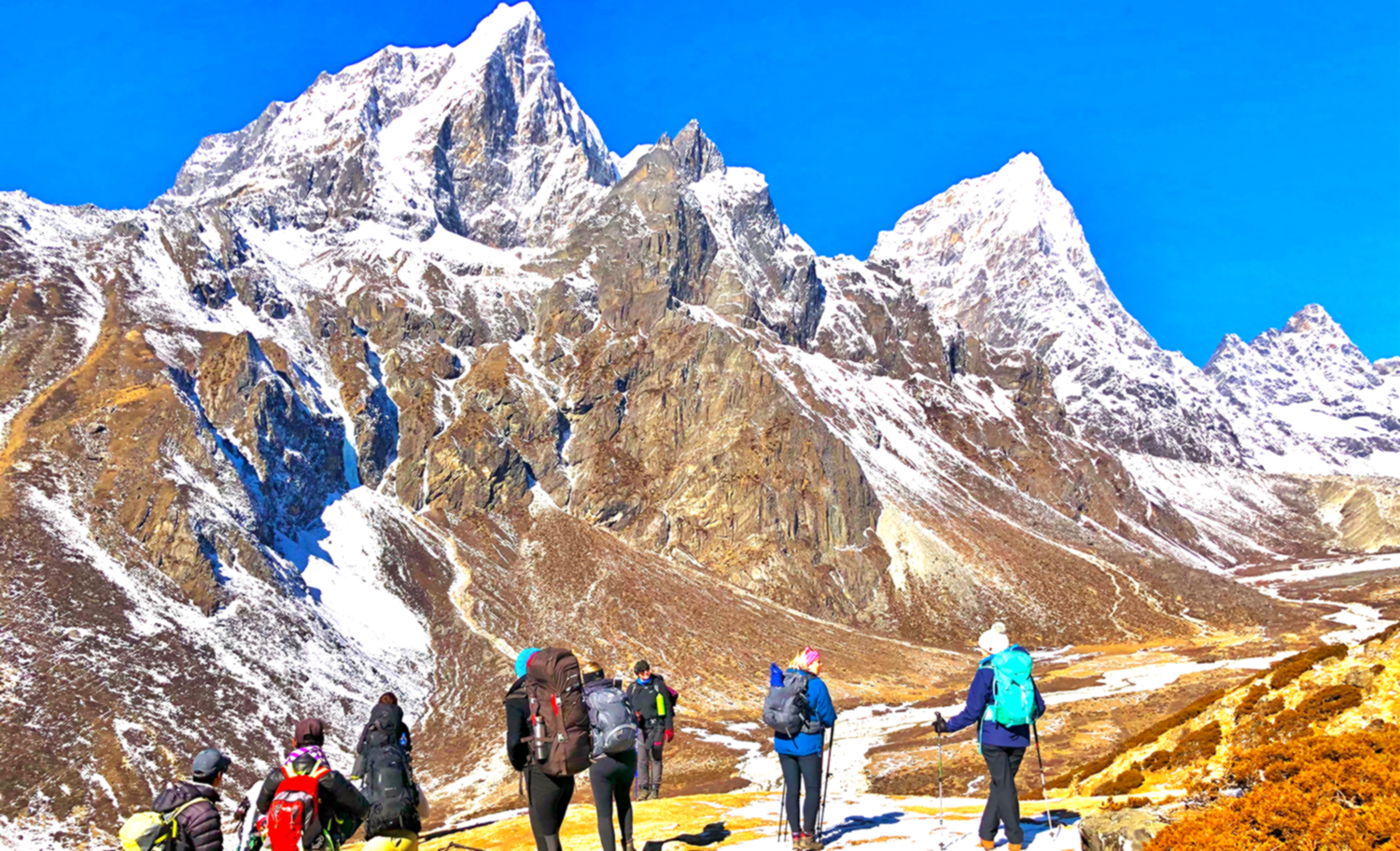
The Makalu-Barun region is a remote and pristine area in eastern Nepal, known for its breathtaking landscapes, rich biodiversity, and challenging trekking routes. Here's an overview of what you can expect from the Makalu-Barun region:
Mount Makalu is the fifth highest peak in the world, standing at 8,485 meters (27,838 feet) above sea level.Trekking in the Makalu-Barun region offers stunning views of this majestic peak, as well as neighboring peaks like Chamlang and Baruntse.
The Barun Valley is a remote and isolated valley located to the south of Mount Makalu.Trekking through the Barun Valley takes you through pristine forests, alpine meadows, and glacial moraines, offering unparalleled natural beauty. Makalu-Barun National Park: The entire region is protected by Makalu-Barun National Park, which is one of the least disturbed and most biodiverse areas in Nepal.
The park is home to a wide variety of flora and fauna, including rare and endangered species like the red panda, Himalayan tahr, and clouded leopard. High Mountain Passes:
Trekking in the Makalu-Barun region involves crossing high mountain passes such as the Shipton La Pass and the Keke La Pass.
These passes offer stunning panoramic views of the surrounding Himalayan peaks and glaciers. Remote Villages and Ethnic Culture:The region is inhabited by various ethnic groups, including the Sherpa, Rai, and Limbu people.Trekking through traditional villages allows you to experience the unique culture, hospitality, and way of life of these communities.
The Arun Valley is another highlight of the Makalu-Barun region, known for its deep gorges, lush forests, and the powerful Arun River.Trekking through the Arun Valley provides opportunities to witness diverse landscapes and encounter remote settlements.
The trek to Makalu Base Camp offers a challenging but rewarding experience, with stunning views of Mount Makalu and its surrounding peaks.
The base camp is located at the foot of the southeast face of Makalu, surrounded by glaciers and towering ice walls.Overall, trekking in the Makalu-Barun region offers a wilderness adventure like no other, with its rugged terrain, diverse ecosystems, and remote villages providing a truly unforgettable experience for adventurous trekkers.
This area is renowned for its biodiversity, with lush forests, alpine meadows, and stunning views of Mount Makalu (8,485 meters / 27,838 feet), the fifth highest peak in the world.
It's a paradise for nature lovers and offers a chance to explore remote, untouched wilderness.
what is Upper Dolpo trekking
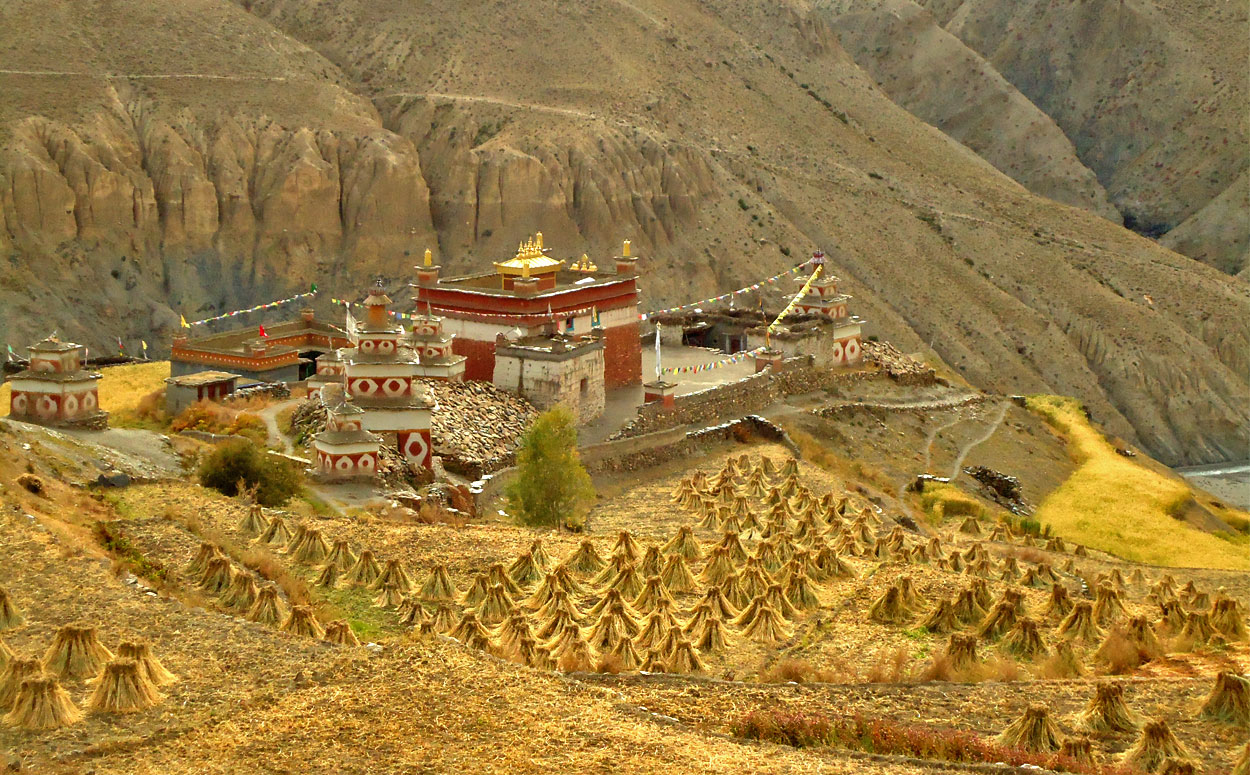
Upper Dolpo trekking is a unique and remote adventure in the Dolpa district of western Nepal. It's renowned for its rugged landscapes, ancient Tibetan Buddhist culture, and the preserved traditions of the Dolpo people. Here's what you can expect from trekking in Upper Dolpo:
Remote and Isolated: Upper Dolpo is one of the most remote and least-visited regions in Nepal. The trekking routes here are far from the beaten path and offer a sense of wilderness and isolation. Shey Phoksundo National Park:The trek often starts from Juphal and takes you into Shey Phoksundo National Park, home to the pristine Phoksundo Lake.
The park is rich in biodiversity, with diverse flora and fauna, including the elusive snow leopard and blue sheep. Phoksundo Lake:Phoksundo Lake is one of the deepest alpine lakes in Nepal, renowned for its turquoise waters and dramatic setting amidst towering cliffs.Trekking around the lake offers breathtaking views and a chance to explore nearby monasteries and traditional villages.
Tibetan Buddhist Culture:The Upper Dolpo region is culturally Tibetan, with strong influences from Tibetan Buddhism.Along the trekking route, you'll encounter ancient monasteries, chortens (Buddhist stupas), and prayer flags, providing insight into the spiritual practices of the local people.Traditional Villages:Trekking through Upper Dolpo allows you to visit traditional Tibetan-style villages like Ringmo, Shey, and Saldang.These villages are characterized by stone houses, barley fields, and terraced agriculture, offering a glimpse into the traditional way of life.
High Mountain Passes:The trek often involves crossing high mountain passes, such as the Kang La Pass and the Jeng La Pass, which offer panoramic views of the surrounding Himalayan peaks.Barren Landscapes and Himalayan Views:Upper Dolpo is known for its rugged and barren landscapes, with rocky cliffs, deep gorges, and high-altitude desert terrain.
Despite its harsh environment, the region offers stunning views of snow-capped peaks, including Dhaulagiri and Kanjirowa.
Restricted Area Permit:Upper Dolpo is a restricted area, and trekkers need a special permit to enter. This helps preserve the unique culture and environment of the region.Overall, trekking in Upper Dolpo offers a once-in-a-lifetime adventure for those seeking a truly remote and authentic Himalayan experience, with its untouched landscapes and ancient culture.
Upper Dolpo is a culturally rich and remote region known for its unique Tibetan culture, ancient monasteries, and dramatic landscapes.Trekking through Upper Dolpo provides a glimpse into a way of life that has remained largely unchanged for centuries.These are just a few highlights of the Great Himalaya Trail in Nepal. Each region along the trail has its own distinct charm, culture, and natural beauty, making it an unforgettable trekking experience.
FAQs
The Great Himalaya Trail (GHT) is a long-distance trekking route that spans the entire length of the Himalayas, from the eastern border of Bhutan to the western edge of Pakistan. It stretches over 4,500 kilometers (2,800 miles) and passes through some of the most remote and breathtaking landscapes in the world.
The trail is not a single, continuous path but rather a network of existing trails, footpaths, and routes that traverse the entire Himalayan range. It offers trekkers the opportunity to experience diverse cultures, ecosystems, and terrain, from lush forests and alpine meadows to high mountain passes and glaciers.
The GHT is typically divided into several sections, including Eastern, Central, and Western routes in Nepal, as well as sections in Bhutan, India, Pakistan, and Tibet. Each section offers its own unique challenges and rewards, with trekkers often encountering rugged terrain, high altitudes, and a wide variety of flora and fauna along the way.
Trekking the Great Himalaya Trail requires careful planning, physical fitness, and proper gear due to the remote and challenging nature of the terrain. It's a bucket-list adventure for many outdoor enthusiasts seeking an unforgettable journey through one of the world's most iconic mountain ranges.
The time it takes to complete the Great Himalaya Trail (GHT) can vary significantly depending on several factors, including the specific route chosen, individual trekking pace, weather conditions, and the level of acclimatization required. Generally, completing the entire trail can take anywhere from 4 to 6 months for most trekkers.
Here's a breakdown of some factors that influence the duration:
Route and Sections: The GHT is divided into various sections, including Eastern, Central, and Western routes in Nepal, as well as sections in Bhutan, India, Pakistan, and Tibet. Each section can take anywhere from a few weeks to several months to complete. Trekking Pace: Some trekkers prefer a faster pace, covering more distance each day, while others take a slower, more leisurely approach, allowing time for exploration and acclimatization. Your personal trekking pace will impact the overall duration.
Altitude and Acclimatization: Due to the high altitudes encountered along the GHT, proper acclimatization is crucial to avoid altitude sickness. This may require taking rest days or trekking at a slower pace in certain sections, which can extend the total time needed.
Weather Conditions: The trekking season and prevailing weather conditions can affect progress along the trail. Heavy rainfall, snowfall, or adverse weather conditions may slow down or halt progress, particularly in higher altitude regions.
Permits and Logistics: Obtaining necessary permits, arranging transportation to trailheads, resupplying food and gear, and dealing with other logistical challenges can also impact the overall duration of the trek.While some experienced and determined trekkers have completed the entire GHT in as little as 4 months, most trekkers take between 5 to 6 months to complete the trail, allowing for ample time to enjoy the journey, adapt to altitude, and fully experience the diverse landscapes and cultures along the way.
In Nepal, the Great Himalaya Trail (GHT) is divided into three main sections: the Eastern, Central, and Western routes. Each section offers trekkers unique experiences, stunning landscapes, and diverse cultures. Here's a breakdown of the GHT routes in Nepal:
Eastern Section: Starting from the eastern border with India and Bhutan, this section of the GHT follows remote trails through the eastern Himalayas of Nepal. Key highlights include:
Kanchenjunga Base Camp Trek: Trekking around the world's third-highest peak, Kanchenjunga (8,586m), with stunning views and diverse flora and fauna.
Makalu Base Camp Trek: Exploring the Makalu-Barun National Park, home to the world's fifth-highest peak, Makalu (8,485m), and crossing challenging high passes. Arun Valley Trek: Following the Arun River valley, known for its lush forests, terraced fields, and traditional Rai and Sherpa villages.
Central Section:This section crosses the heart of the Nepalese Himalayas, including the Everest, Rolwaling, and Langtang regions. Highlights include: Everest Base Camp Trek: Trekking to the foot of the world's highest peak, Mount Everest (8,848m), and experiencing Sherpa culture in the Khumbu region. Rolwaling Valley Trek: Exploring the remote and rugged Rolwaling Valley, with views of Gauri Shankar and Rolwaling peaks.
Langtang Valley Trek: Trekking through the Langtang National Park, with views of Langtang Lirung and opportunities to experience Tamang culture. Western Section: Continuing from central Nepal, the Western section covers the Annapurna and Dhaulagiri regions. Highlights include:Annapurna Circuit Trek: Circling the Annapurna Massif, crossing the Thorong La Pass (5,416m), and experiencing diverse landscapes and cultures.
Annapurna Base Camp Trek: Trekking to the base camp of Annapurna (8,091m), surrounded by towering peaks and lush rhododendron forests.Upper Mustang Trek: Exploring the ancient kingdom of Mustang, with its unique Tibetan culture, caves, and monasteries.These sections of the GHT in Nepal offer a wide range of trekking experiences, from remote wilderness to iconic Himalayan peaks and vibrant cultural encounters. Trekkers can choose to tackle one section at a time or combine multiple sections for an extended journey through the Nepalese Himalayas.
New Law Makes Guides Mandatory Effective April 1, 2023, solo or free independent trekkers have to mandatory hire a guide or a porter before setting off to Nepal’s mountains. Nepal Tourism Board, the country’s national tourism promotion body, which includes trekking and mountaineering associations, on Thursday, decided to make a guide mandatory for solo or free independent trekkers (FITs) due to increasing safety and security concerns.
The best time to trek the Great Himalaya Trail is during the spring (March to May) and autumn (September to November) seasons when the weather is generally stable, and the skies are clear. However, some sections may be accessible during other times of the year as well, depending on local conditions.
Trekking permits vary depending on the country and region you are trekking through. In Nepal, trekkers need permits for the specific regions they plan to visit, such as the Annapurna Conservation Area Permit (ACAP) or the Sagarmatha National Park Permit. Permits for other countries along the trail should also be obtained in advance.
Trekking the Great Himalaya Trail (GHT) requires a good level of physical fitness due to the challenging terrain, high altitudes, and long durations involved. Here's a breakdown of the fitness requirements:
Endurance: Trekking the GHT involves long days of walking, often for several weeks or months at a time. Trekkers should have good cardiovascular endurance to handle the sustained physical activity required, sometimes for 6-8 hours a day or more.
Strength: While trekking, you'll encounter various terrains, including steep ascents, descents, and uneven trails. Having adequate strength, particularly in the legs and core, will help you navigate these terrains with less fatigue and reduced risk of injury.
Altitude Fitness: Many sections of the GHT reach high altitudes, where oxygen levels are lower. Adequate altitude fitness is essential to prevent altitude sickness and to acclimatize effectively. This includes gradually ascending, staying well-hydrated, and recognizing the symptoms of altitude sickness.
Pack Carrying: Depending on your trekking style and support arrangements, you may need to carry a backpack containing essential gear, food, and water. Being comfortable carrying a backpack for long distances and over varying terrain is important.
Training: Pre-trek preparation is crucial. It's recommended to engage in a regular training program that includes cardiovascular exercises (such as hiking, running, or cycling), strength training (especially for legs and core), and hiking with a loaded backpack to simulate trekking conditions.
Flexibility and Balance: Flexibility and balance are important for navigating uneven terrain, crossing streams, and preventing injuries. Incorporating activities like yoga or stretching into your training routine can help improve flexibility and balance.Mental Stamina: Trekking the GHT can be physically and mentally demanding. Being mentally prepared for the challenges, including unpredictable weather, long days, and remote conditions, is just as important as physical fitness.
It's essential to assess your fitness level honestly and progressively increase your training to prepare for the demands of the GHT. Additionally, consult with a healthcare professional before undertaking any strenuous trekking activities, especially at high altitudes.
Yes, along the Great Himalaya Trail (GHT), there are various accommodation and food options available, although they can vary depending on the section and remoteness of the area. Here's what you can typically expect:
Accommodation:
Teahouses/Lodges: In many sections of the GHT, particularly the popular trekking routes in Nepal, there are teahouses or lodges scattered along the trails. These are basic guesthouses offering simple accommodation with beds or mattresses, blankets, and shared bathroom facilities. Some teahouses may have hot showers, but amenities can be basic.
Camping: In more remote or less developed areas of the GHT, where teahouses are scarce or nonexistent, camping is often the only option. Trekkers need to carry their own camping gear, including tents, sleeping bags, and cooking equipment. Camping allows for more flexibility in choosing your overnight stops and offers a closer connection with nature.
Homestays: In certain regions, especially in rural areas, trekkers may have the opportunity to stay with local families in their homes. This provides a unique cultural experience and the chance to interact with the local community. Food:
Teahouse Meals: Teahouses typically offer meals such as dal bhat (rice and lentils), noodles, soups, momos (dumplings), and various other local dishes. While the menu options may be limited, teahouse meals are usually hearty and nutritious, providing the necessary energy for trekking.
Packed Lunches: Many teahouses can also provide packed lunches for trekkers to take with them on the trail. These usually consist of sandwiches, boiled eggs, fruits, snacks, and sometimes a thermos of hot tea or coffee.
Camping Meals: If you're camping, you'll need to bring your own food or arrange for a porter or guide to carry it for you. Meals can be prepared using portable stoves or open fires, with options such as instant noodles, rice, pasta, canned goods, and dehydrated meals.
Local Food Purchases: In some villages along the trail, you may have the opportunity to purchase fresh produce, snacks, and other supplies from local shops or markets. This can be a good way to supplement your meals and support the local economy.
Overall, while the accommodation and food options along the GHT may be basic compared to urban areas, they are sufficient to support trekkers throughout their journey. It's essential to be flexible and prepared for varying conditions, especially in more remote sections of the trail.
Trekking the Great Himalaya Trail (GHT) is an adventure that comes with its own set of challenges and risks. Here are some important safety precautions to keep in mind while trekking:
Acclimatization:Take time to acclimatize to high altitudes, especially if you're ascending rapidly. Ascend gradually, stay hydrated, and pay attention to your body's signals. If you experience symptoms of altitude sickness (headache, dizziness, nausea), descend to a lower altitude immediately.
Weather Awareness:
Himalayan weather can be unpredictable, with rapid changes in conditions. Be prepared for rain, snow, wind, and temperature fluctuations. Check weather forecasts before setting out and adjust your plans accordingly. Carry appropriate clothing and gear for all weather conditions.
Hydration and Nutrition:
Stay well-hydrated and nourished throughout your trek. Drink plenty of water, even if you don't feel thirsty, to prevent dehydration. Eat regular, nutritious meals to maintain energy levels.
Trekking with a Guide or Group:
Consider trekking with a guide or in a group, especially if you're unfamiliar with the terrain or local conditions. Guides can provide valuable assistance, navigation, and emergency support. If trekking independently, ensure someone knows your itinerary and expected return time.
First Aid and Medical Supplies:
Carry a well-stocked first aid kit and any necessary medications for common ailments and emergencies. Be prepared to treat blisters, minor injuries, and altitude sickness symptoms. Know how to use your medical supplies effectively.
Emergency Communication:
Carry a charged mobile phone with emergency contact numbers programmed in. In remote areas with no cellular coverage, consider bringing a satellite phone or emergency beacon for communication in case of emergencies.
Physical Fitness:
Ensure you're physically prepared for the demands of trekking, including long days of walking and carrying a backpack. Engage in pre-trek training to improve cardiovascular fitness, strength, and endurance.
Respect Local Customs and Culture:
Familiarize yourself with local customs, traditions, and cultural sensitivities. Respect religious sites, wildlife, and the environment. Follow local guidelines for waste disposal and conservation efforts.
Environmental Hazards:
Be aware of potential environmental hazards such as avalanches, landslides, river crossings, and unstable terrain. Exercise caution when crossing bridges, traversing steep slopes, or navigating glacier areas.
Stay Informed:
Keep yourself informed about trail conditions, route changes, and any potential risks or hazards along the way. Consult with locals, guides, or trekking agencies for up-to-date information before setting out.
By following these safety precautions and being prepared for the challenges of trekking in the Himalayas, you can minimize risks and ensure a safer and more enjoyable experience on the Great Himalaya Trail.
Preparing for trekking the Great Himalaya Trail (GHT) requires careful planning and physical conditioning. Here's a comprehensive guide to help you prepare effectively:
Physical Conditioning:
Cardiovascular Fitness: Engage in activities such as hiking, running, cycling, or swimming to improve your cardiovascular endurance. Aim for activities that mimic the demands of trekking.
Strength Training: Focus on building strength in your legs, core, and upper body to handle the demands of carrying a backpack and navigating uneven terrain. Incorporate exercises like squats, lunges, planks, and push-ups into your routine.
Altitude Training:
If possible, spend time at high altitudes to acclimatize your body to reduced oxygen levels. If not, consider using altitude simulation devices or training masks to simulate high-altitude conditions.
Trekking Gear:
Invest in high-quality trekking gear, including sturdy hiking boots, a comfortable backpack, lightweight and moisture-wicking clothing, a warm insulated jacket, waterproof outer layers, a sleeping bag suitable for cold temperatures, and a tent if camping.
Don't forget essential items like trekking poles, a headlamp with extra batteries, sunscreen, sunglasses, a first aid kit, a water purification system, and a map or GPS device.
Nutrition and Hydration:
Maintain a balanced diet with a focus on carbohydrates for energy, protein for muscle repair, and healthy fats for sustained energy. Eat plenty of fruits, vegetables, and whole grains.
Stay well-hydrated by drinking plenty of water throughout the day. Avoid excessive caffeine and alcohol consumption, as they can contribute to dehydration.
Mental Preparation:
Prepare yourself mentally for the challenges of trekking, including long days, altitude, and unpredictable weather. Develop a positive mindset and cultivate mental resilience to overcome obstacles.
Practice mindfulness, meditation, or visualization techniques to stay focused and calm during challenging situations on the trail.
Pre-Trek Training:
Gradually increase the intensity and duration of your training hikes to simulate trekking conditions. Practice hiking with a loaded backpack to get used to carrying weight over long distances.Take advantage of local trails and terrain to train in conditions similar to those you'll encounter on the GHT.
Research and Planning:
Research your chosen route thoroughly, including trail conditions, permits required, weather patterns, and accommodation options.Plan your itinerary carefully, considering daily distances, rest days, and acclimatization stops. Be flexible and prepared to adjust your plans based on trail conditions and your own physical condition.
Health and Safety:
Consult with a healthcare professional before embarking on your trek to ensure you're in good health and adequately prepared for the physical demands.Familiarize yourself with first aid techniques and basic wilderness survival skills. Carry a comprehensive first aid kit and know how to use its contents effectively.
By following these steps and dedicating time to prepare physically, mentally, and logistically, you'll be better equipped to tackle the challenges of trekking the Great Himalaya Trail and fully enjoy the experience.
Additional Information
The Great Himalaya Trail (GHT) is famous for trekking due to several key reasons:
Diverse Landscapes: The GHT offers trekkers the opportunity to traverse a wide range of landscapes, from lush green valleys to rugged mountain passes, alpine meadows, glacial lakes, and remote villages. The diversity of scenery along the trail is unparalleled, providing a unique and captivating trekking experience.
High Altitude Trekking: Many sections of the GHT pass through high altitude regions, including some of the world's highest mountain ranges such as the Himalayas. Trekkers can challenge themselves by trekking at altitudes well above 5,000 meters (16,404 feet), offering stunning panoramic views of towering peaks.
Cultural Immersion: The trail passes through numerous traditional villages inhabited by diverse ethnic groups, including Sherpas, Gurungs, Tamangs, and others. Trekkers have the opportunity to immerse themselves in local cultures, traditions, and lifestyles, interacting with friendly locals and experiencing authentic Himalayan hospitality.
Wildlife and Biodiversity: The GHT is home to a rich diversity of flora and fauna, including rare and endangered species such as the snow leopard, red panda, Himalayan musk deer, and various species of birds. Trekkers may encounter wildlife along the trail and witness the unique ecosystems of the Himalayan region
.Adventure and Challenge: Trekking the GHT is a challenging adventure that appeals to seasoned trekkers seeking an epic journey. The trail offers various levels of difficulty, from moderate routes suitable for beginners to strenuous sections that require a high level of fitness and experience.
Remote and Untouched Nature: Despite its growing popularity, many parts of the GHT remain relatively untouched by modern development. Trekkers can experience remote wilderness areas, pristine landscapes, and tranquil surroundings away from the hustle and bustle of urban life.
Sense of Accomplishment: Completing a trek along the Great Himalaya Trail is a significant achievement for many trekkers. Whether tackling a short section or traversing the entire trail, the sense of accomplishment and satisfaction from conquering challenging terrain and reaching remote destinations is deeply rewarding.
Photographic Opportunities: The GHT provides breathtaking vistas and photo opportunities at every turn, making it a paradise for photographers. From sunrise over snow-capped peaks to dramatic mountain landscapes and colorful cultural festivals, the trail offers endless opportunities to capture stunning images.
Overall, the Great Himalaya Trail is renowned for offering a truly unforgettable trekking experience that combines adventure, natural beauty, cultural immersion, and personal challenge in one of the world's most spectacular mountain ranges.
Yes, both the Annapurna and Manaslu regions, as well as Upper Mustang, are part of the Great Himalaya Trail (GHT). Here's how they fit into the trail:
Annapurna Region:
The Annapurna region is one of the most popular trekking destinations in Nepal and is a key section of the GHT.The Annapurna Circuit Trek, which circumnavigates the Annapurna Massif, is a major component of the GHT. This trek typically takes around 15 to 20 days to complete.
Additionally, the Annapurna Base Camp Trek and various other side treks within the region can be incorporated into the Geat Himalayan Trail itinerary.
Manaslu Region:
The Manaslu region is another significant section of the GHT, known for its pristine landscapes and rich cultural heritage.The Manaslu Circuit Trek, which circumnavigates Mount Manaslu, the eighth highest mountain in the world, is a prominent part of the GHT. This trek generally takes around 14 to 16 days to complete.The Tsum Valley Trek, located in the northern part of the Manaslu region, is also often included in the GHT itinerary for its unique cultural and religious significance.
Upper Mustang: Upper Mustang, often referred to as the "Forbidden Kingdom," is a remote and culturally rich region of Nepal that lies within the rain shadow of the Annapurna and Dhaulagiri ranges.While Upper Mustang is not directly on the main route of the GHT, it can be included as a side trek or alternative route for trekkers looking to explore its unique landscapes and Tibetan-influenced culture.The trek to Upper Mustang typically takes around 10 to 14 days, and permits are required to enter the restricted area.
These regions offer diverse landscapes, rich cultural experiences, and challenging trekking routes, making them integral parts of the Great Himalaya Trail experience. Trekkers can choose to incorporate these sections into their GHT itinerary based on their preferences, time constraints, and level of adventure.
Yes, both the Annapurna Circuit Trek, Manaslu Circuit Trek, and Tsum Valley Trek are part of the Great Himalaya Trail (Great Himalayan Trail.
The Annapurna Circuit Trek is a classic trekking route that circles the Annapurna Massif, including Thorong La Pass, one of the highest mountain passes in the world. While the Annapurna Circuit Trek is not directly on the main route of the GHT, it is often included as part of the GHT itinerary due to its popularity, stunning scenery, and cultural diversity. Trekkers following the GHT may choose to incorporate the Annapurna Circuit Trek as a significant section of their journey.
The Manaslu Circuit Trek circumnavigates Mount Manaslu, the eighth highest mountain in the world, in the remote Manaslu region of Nepal. Similar to the Annapurna Circuit Trek, the Manaslu Circuit Trek is not directly on the main route of the GHT but is frequently included as part of the GHT itinerary due to its challenging terrain, cultural experiences, and stunning landscapes.
Trekkers following the GHT may choose to incorporate the Manaslu Circuit Trek as a significant section of their journey.
The Tsum Valley Trek is a side trek that branches off from the Manaslu Circuit Trek and explores the culturally rich Tsum Valley in the northern part of the Manaslu region. Like the Annapurna and Manaslu circuits, the Tsum Valley Trek is not directly on the main route of the GHT but is often included as an alternative or side trek for trekkers seeking a deeper cultural experience and exploration of remote areas.
Trekkers following the Great Himalayan Trail may choose to incorporate the Tsum Valley Trek as an additional segment to their Manaslu Circuit Trek itinerary. While these treks are not part of the primary route of the GHT, they are integral components of the overall trekking experience in Nepal and offer diverse landscapes, cultural encounters, and adventure opportunities for those exploring the Himalayas.

